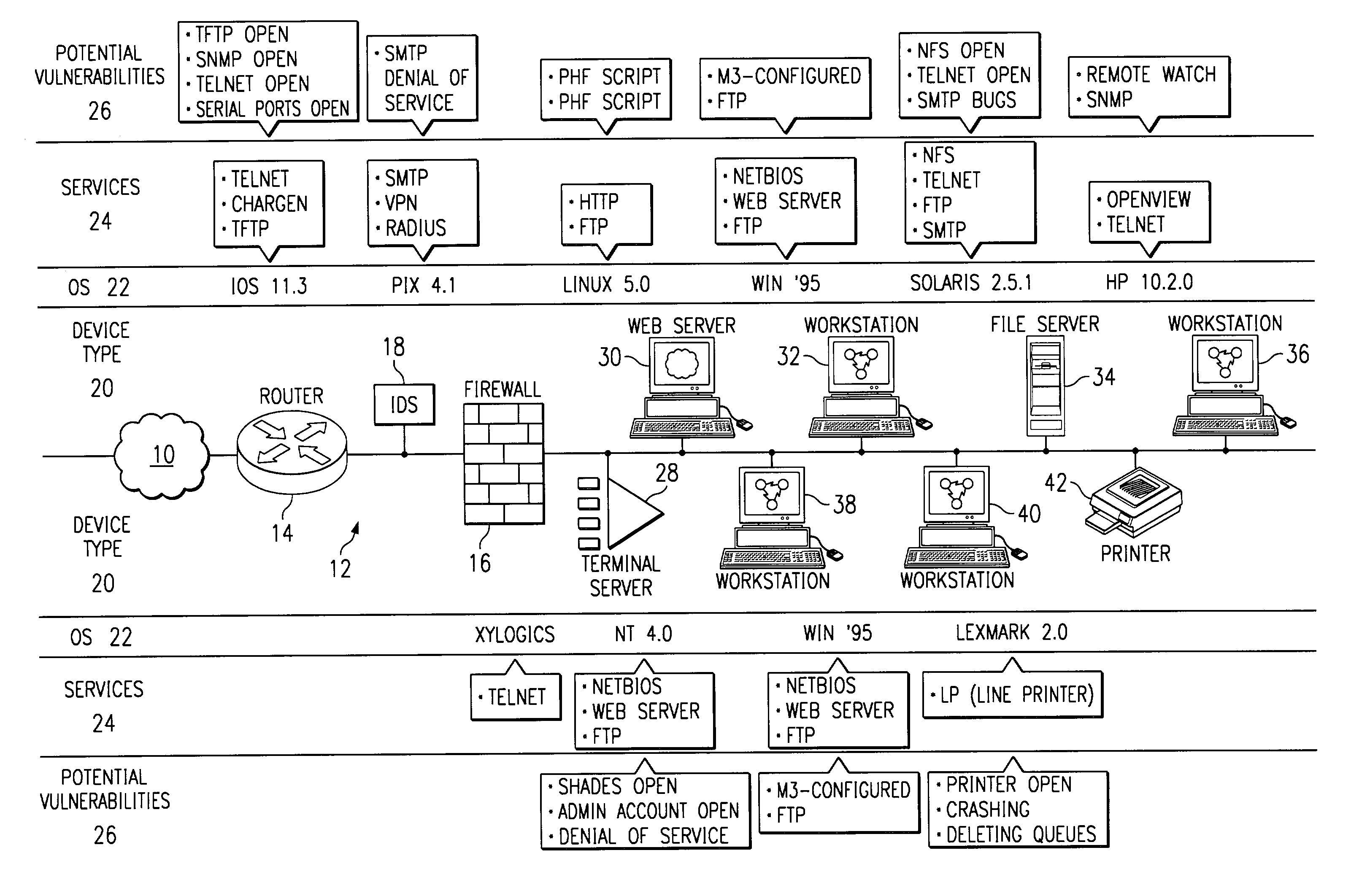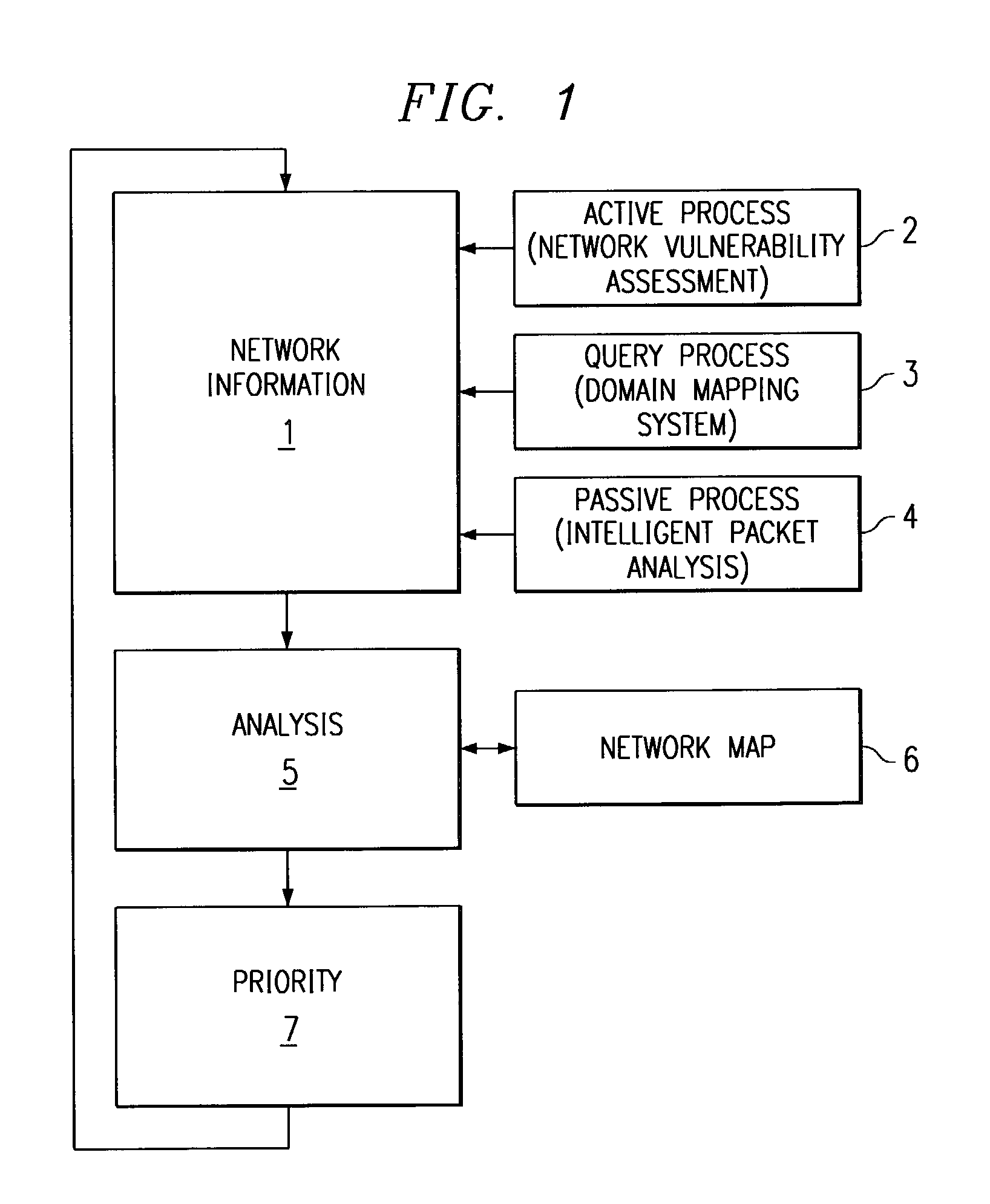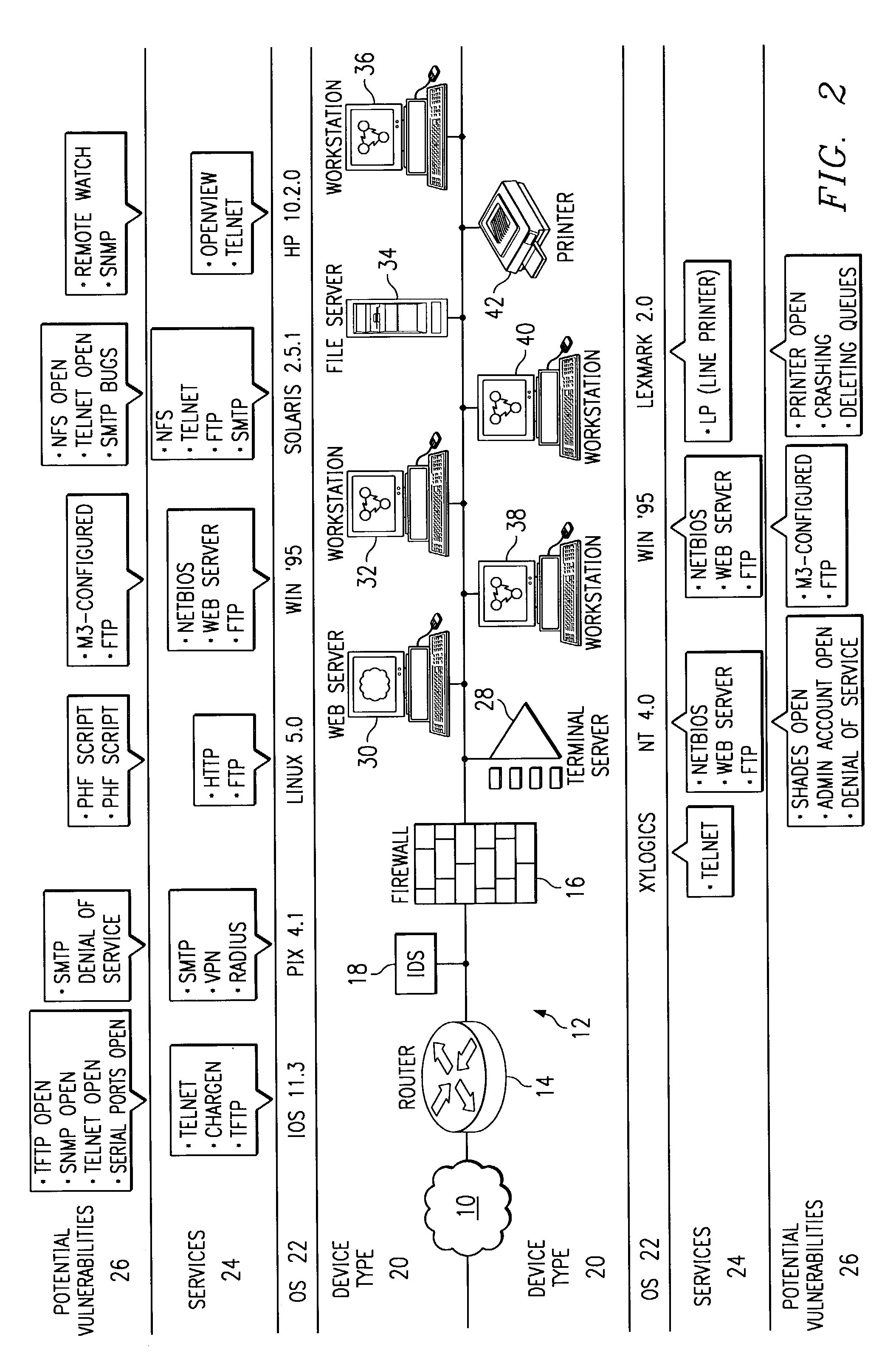Method and system for mapping a network for system security
a network and domain mapping technology, applied in the field of computer networks, can solve the problems of insufficient information for reliable detection of policy violations and patterns of misuse, conventional security products have no mechanism to reliably ascertain network information, and cannot accurately predict the effect of a particular packet on a destination device, so as to reduce the overhead and time needed of data acquisition, reduce the overhead and time associated, and reduce the effect of network overhead
- Summary
- Abstract
- Description
- Claims
- Application Information
AI Technical Summary
Benefits of technology
Problems solved by technology
Method used
Image
Examples
Embodiment Construction
[0025]FIG. 1 is a flow diagram of various embodiments of a method of operation of a system for adaptive network security. An ID System is one such security system that could benefit from the adaptive network security system of the present invention.
[0026]In the method of FIG. 1, network information is acquired at step 1. Network information can comprise, for example, the devices, operating systems, and services available on a network.
[0027]In the embodiments of FIG. 1, such network information can be gathered by an active process 2, a passive process 4, or a query process 3. Active process 2 can include port scans, pinging, and other active methods performed on devices coupled to the network, as well as monitoring responses (such as banners) sent in response to such active methods. One such active process is described in the related U.S. patent application Ser. No. 09 / 222,414, now U.S. Pat. No. 6,301,668, entitled “Method and System for Adaptive Network Security Using Network Vulner...
PUM
 Login to View More
Login to View More Abstract
Description
Claims
Application Information
 Login to View More
Login to View More - R&D
- Intellectual Property
- Life Sciences
- Materials
- Tech Scout
- Unparalleled Data Quality
- Higher Quality Content
- 60% Fewer Hallucinations
Browse by: Latest US Patents, China's latest patents, Technical Efficacy Thesaurus, Application Domain, Technology Topic, Popular Technical Reports.
© 2025 PatSnap. All rights reserved.Legal|Privacy policy|Modern Slavery Act Transparency Statement|Sitemap|About US| Contact US: help@patsnap.com



